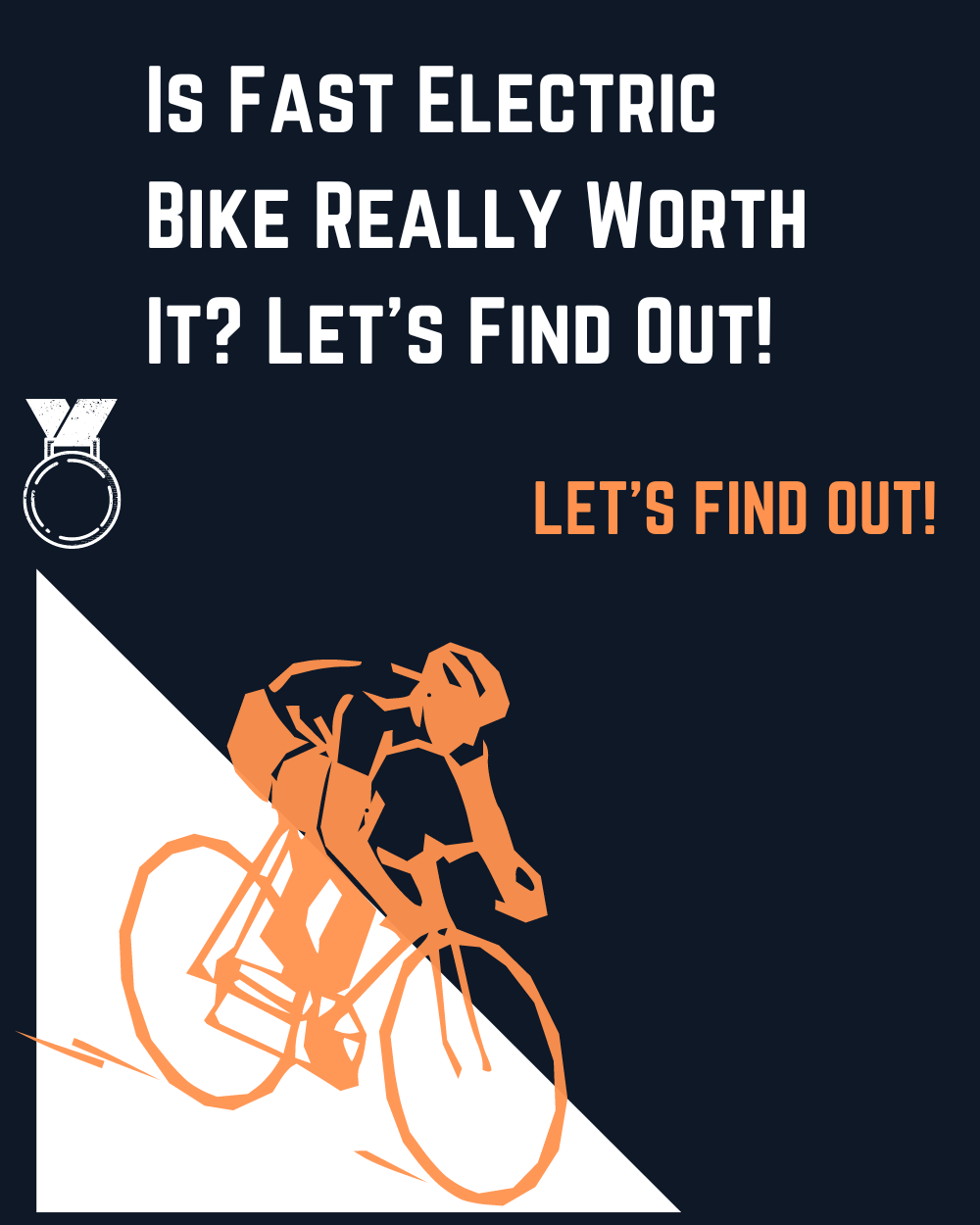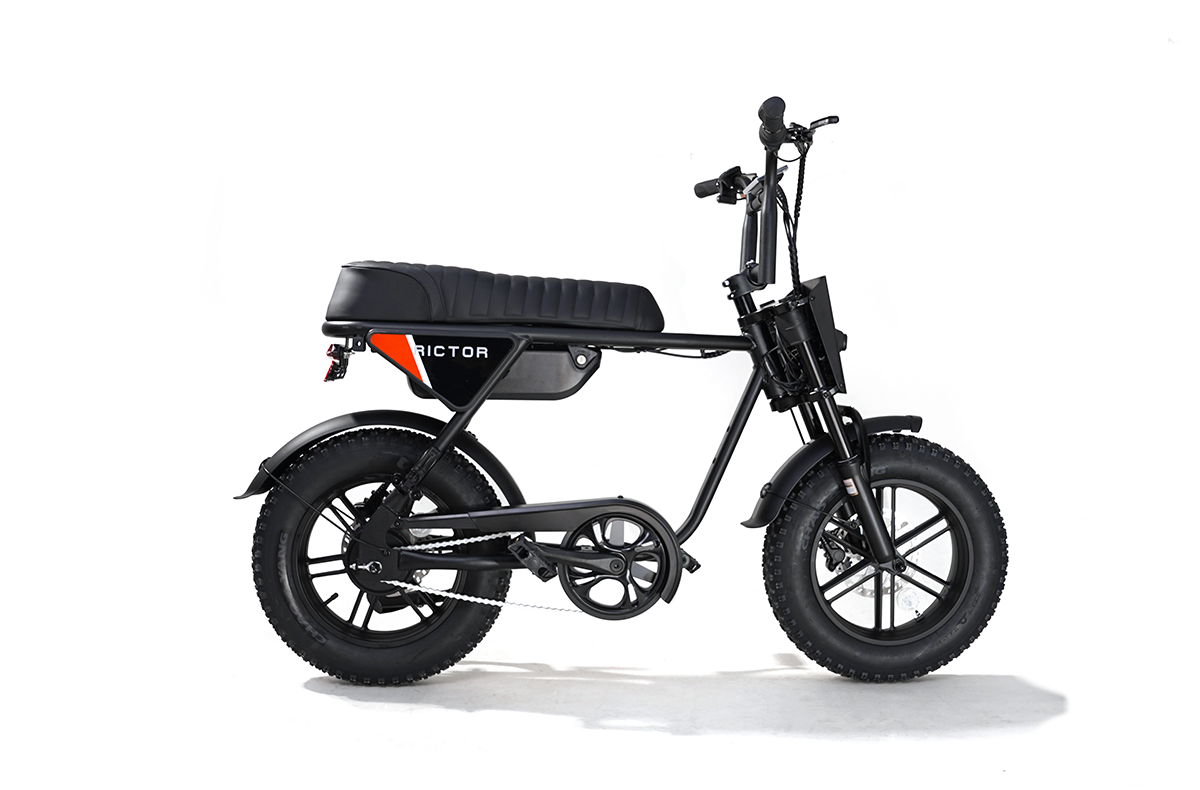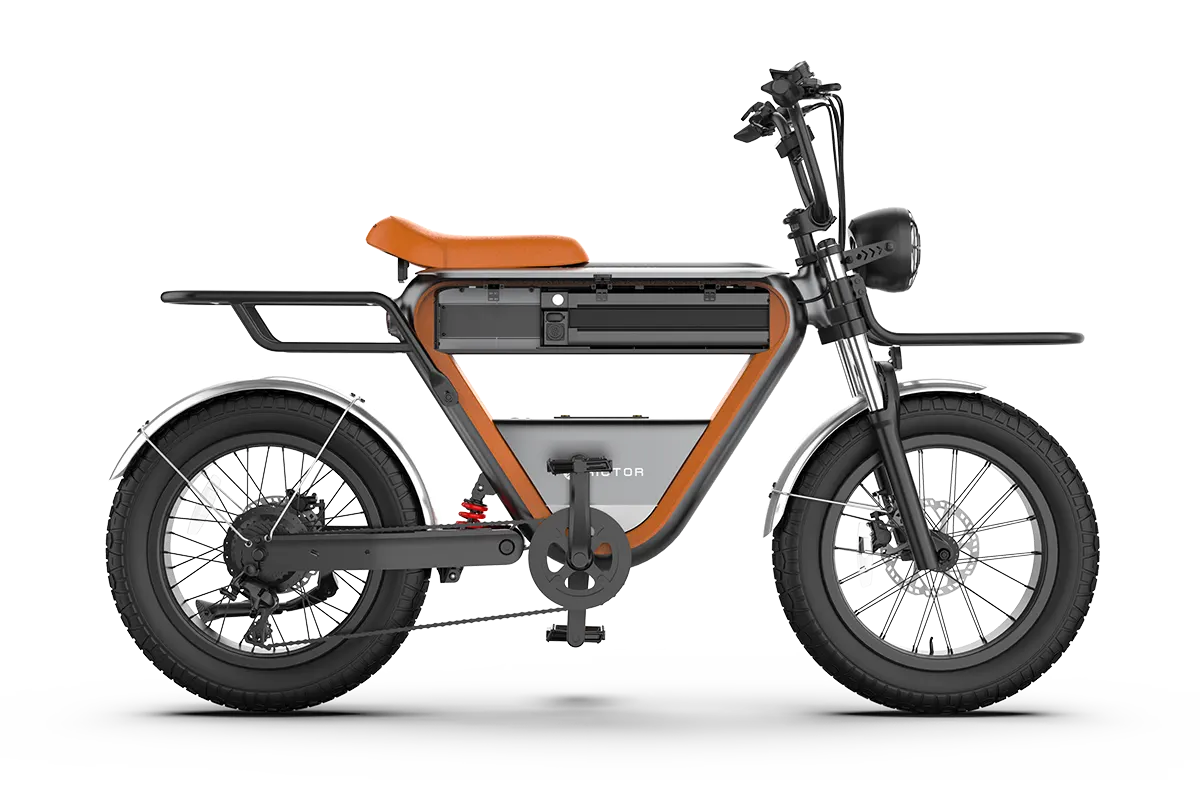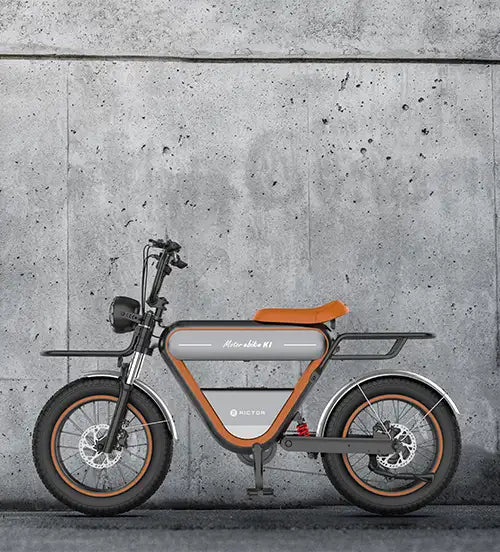
Is Fast Electric Bike Really Worth It? Let’s Find Out!
The global Ebike market has evolved rapidly, now competing with traditional bikes and motorcycles.
According to 2024 data, electric bikes sales are growing at over 10% annually, driven by environmental awareness and urban congestion.
In 2023, the market was valued at $45 billion, reflecting an 11% growth from 2022.
By 2024, it's projected to exceed $50 billion, with a steady CAGR of 10-12% expected over the next five years due to rising demand and technological advancements.

How Fast Can Electric Bike Go
Electrical bikes speed limits change depending on where you are, but in the U.S., there are some common rules.
Class 1 and Class 2 Ebikes max out at 20 mph. For Class 1, you have to pedal to get the motor going, but it stops helping once you hit 20 mph.
Class 2 Ebikes come with a throttle, so you don’t need to pedal to reach that 20 mph limit.
Class 3 Ebikes are a bit faster, getting up to 28 mph with pedal-assist, but they don’t have a throttle.
Over in Europe, things are a little stricter. Most bikes there are capped at 15.5 mph under the EU’s 15194 standard.
If you go faster than these limits, your bike might be classified as a motor vehicle, which means you'll need licenses, registration, and insurance.
Manufacturers are always working to find the right mix between speed and safety, all while staying within these speed rules.
It’s important to note that exceeding these speeds can have legal implications, including the reclassification of your electrical bike as a motor vehicle, which would require licensing, registration, and insurance.
Can an Ebike Go 30 mph? What Decide the Speed
While most street-legal bikes are capped at 28 mph, high-performance models can go faster, especially if you're riding off-road or on private property where the usual speed limits don't apply.
So, what controls the speed of motoried bike?
-
Motor Power: The motor’s wattage is probably the most important factor when it comes to speed. Electric bikes usually range from 250W to 1000W or more. Naturally, the higher the wattage, the faster the bike can go.
-
Battery Capacity: The battery also plays a major role. A more powerful battery, like a 48V or even 52V, can help boost both range and speed, especially when paired with a high-watt motor.
-
Weight: The weight of the bike and rider matters too, but it’s not as critical as motor power or battery. Lighter bikes and riders will hit their top speeds more easily, but it won’t drastically change the maximum speed.
-
Terrain: Where you ride makes a difference. Flat, smooth roads let you hit faster speeds, while hilly or rough surfaces slow you down, though they don’t impact the bike’s potential top speed.
Motor power and battery capacity have the biggest impact on bike’s speed, while weight and terrain play a secondary role.
While 28 mph is the legal limit for most Class 3 electric bikes, off-road or custom-modified electric bikes can push past 30 mph.
Just keep in mind that modifying your ebike to go faster might not be legal where you live.
Is Faster Always Better for E-Bike
As the electric bike market continues to grow, manufacturers are constantly pushing for faster speeds and higher performance.
But do regular riders actually need these high-performance bikes with extreme speeds? Not really. That’s why the top speed is capped at 28 mph.
Most of the time, an average-speed bike is more than enough for daily use—whether you’re commuting, running errands, or going for a casual ride.
The focus should be on finding the right balance that fits your lifestyle, rather than chasing the fastest electrical bike out there.
One of the best features of the Rictor K1 is its smart technology. Forget about messing with keys—now you can unlock your electric bike with just your smartphone. On top of that, the K1 comes with a custom app that tracks all your riding stats.
You’ll be able to keep an eye on your speed, distance, battery level, and even view your ride history—all in real-time.
This makes it super easy to stay on top of your performance and make the most of every ride. It’s all about convenience, so you can focus on enjoying the ride, not worrying about the details.
Fastest Electric Bike: How Fast Can They Really Go
Electric bikes are getting seriously fast, almost reaching motorcycle speeds. Some of the fastest eBikes today can hit over 50 mph!
To give you an idea, a typical Honda or Harley Davidson motorcycle goes between 60 and 120 mph, so while motorcycles are still faster, eBikes are catching up quickly.
One of the speed demons in the eBike world is the Stealth B-52 Bomber, with a top speed of 50 mph.
Another big player, the Delfast Top 3.0, also hits 50 mph, making these bikes serious competitors in two-wheel transport.
But don’t plan on hitting these speeds on the street. These high-speed eBikes are built for off-road racing, and taking them on public roads without proper modifications or a license can get you into trouble.
Can I Make My Bike Go Faster
For many riders, the thrill of speed is an essential part of the cycling experience, and the idea of making an ebike go faster is appealing.
However, before attempting to modify your bike, it’s important to consider the potential legal and safety risks involved.
That said, there are several methods that can be used to increase the speed of your electric bike:
-
Upgrade Battery: One of the easiest ways to enhance your bike’s speed is by upgrading the battery. A higher-voltage battery, such as moving from a 36V to a 48V or 52V battery, will provide more power to the motor, increasing its top speed.
-
Motor Tuning: Many bikes come with software that limits the motor’s output to stay within legal limits. By accessing the bike’s controller settings, you can remove or adjust these limitations, allowing the motor to provide more power.
-
Lighter Components: Reducing the overall weight of the bike can have a significant impact on speed. Swapping out heavy components for lighter alternatives, such as carbon fiber frames or wheels, can give you a performance boost.
Conclusion
E-bikes can definitely be fast, but faster doesn’t always mean better.
For most riders, an average-speed Ebike offers more than enough performance for everyday needs like commuting, errands, and leisurely rides.
While high-speed models might seem exciting, the focus should be on finding the right balance between speed, convenience, and safety.
Ultimately, it’s about enjoying the ride—not just how fast you can go.
FAQs
How long does it take to charge an electric bike battery?
Charging time depends on the battery capacity and charger type. On average, a standard electric bike battery takes about 4 to 6 hours to fully charge, though some higher-end models can charge faster with quick-charge systems.
What’s the lifespan of an Ebike battery?
The typical lifespan of an electric bike battery is around 3 to 5 years, depending on usage, maintenance, and how often you charge it. Over time, the battery's capacity will decrease, but proper care can extend its life.
Can I replace the motor on my electric bike?
Yes, you can replace the motor on an Ebike, but it requires specific technical knowledge and compatibility with your existing bike components. It’s often easier and more cost-effective to buy a new Ebike if major upgrades are needed.




